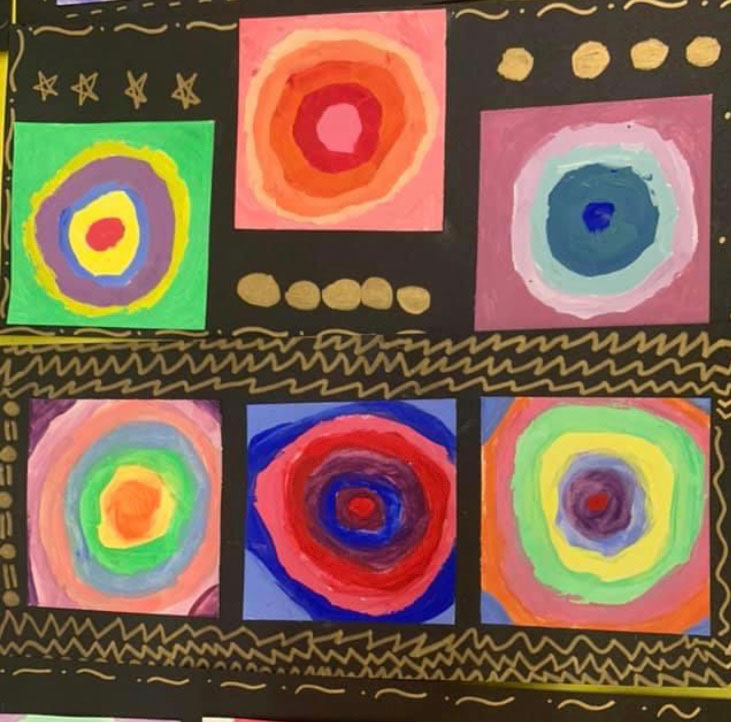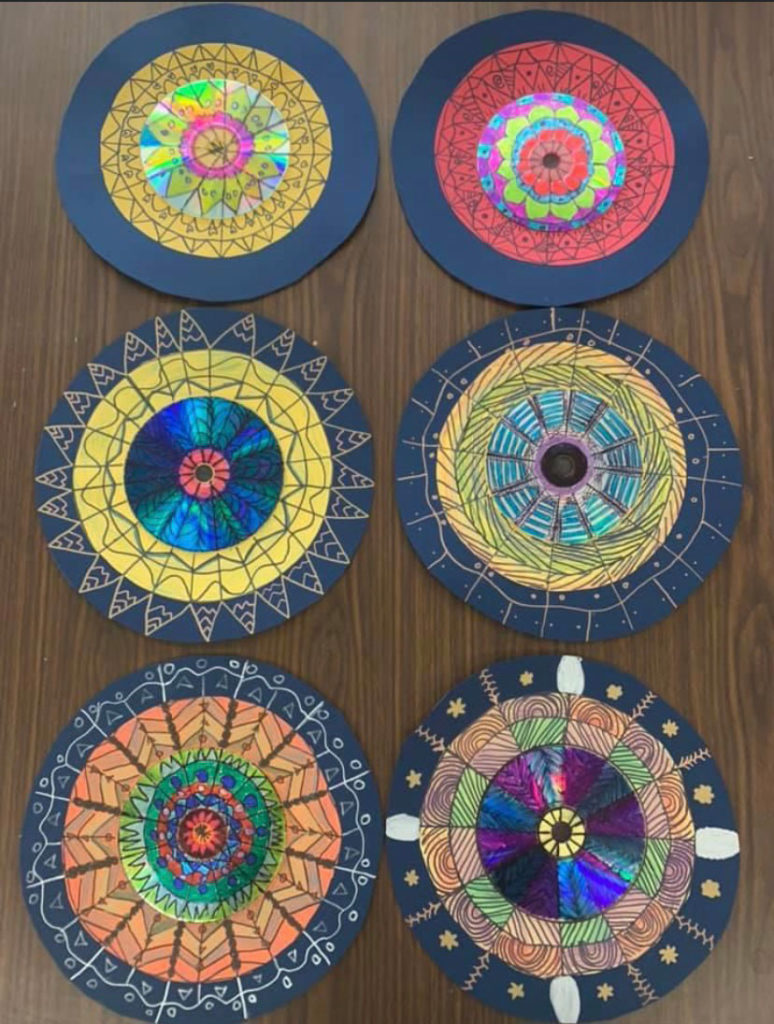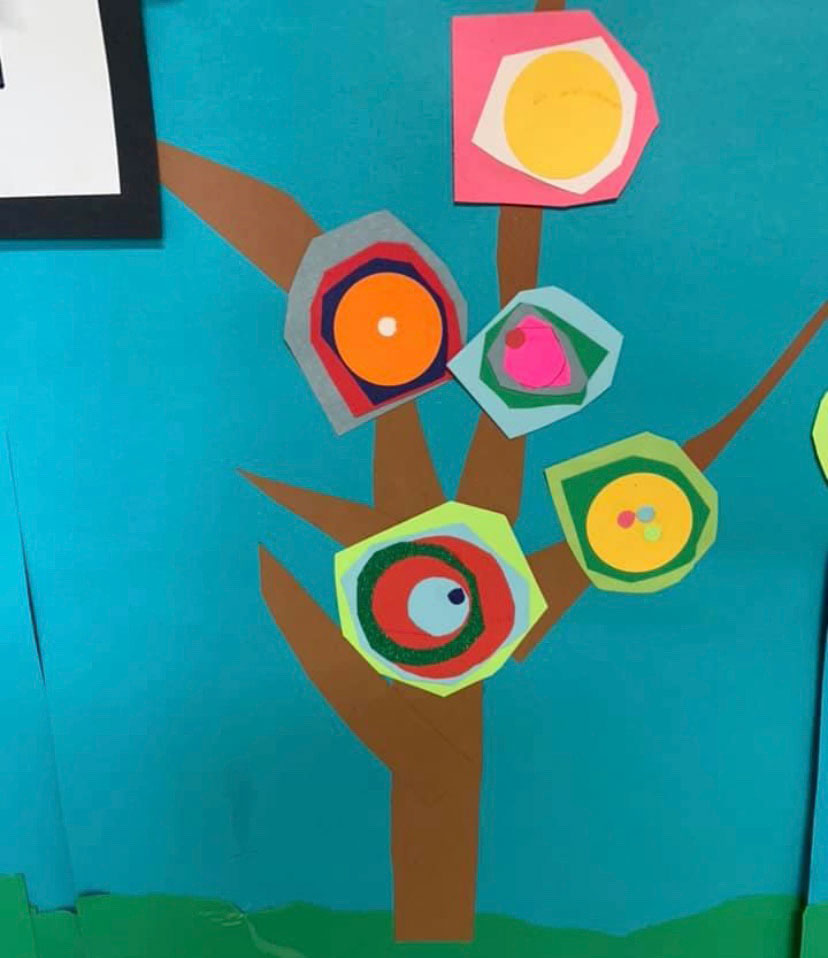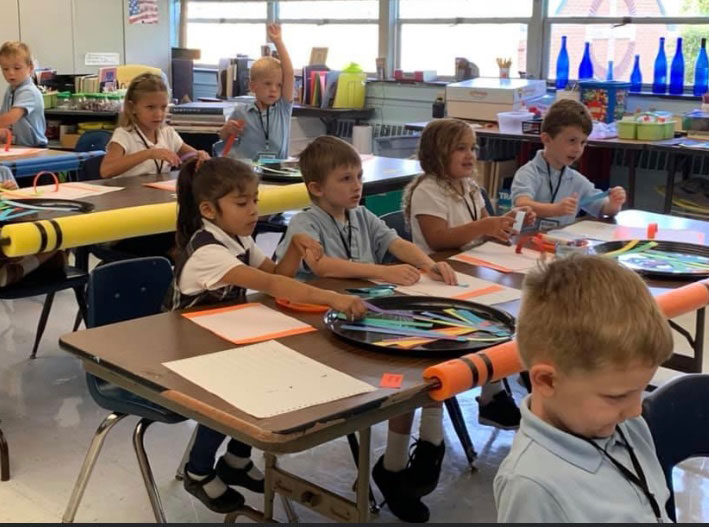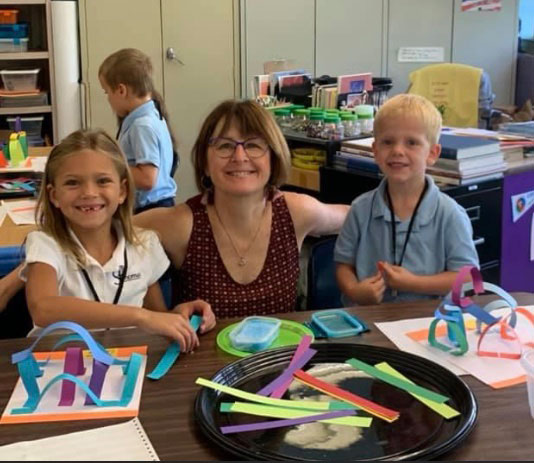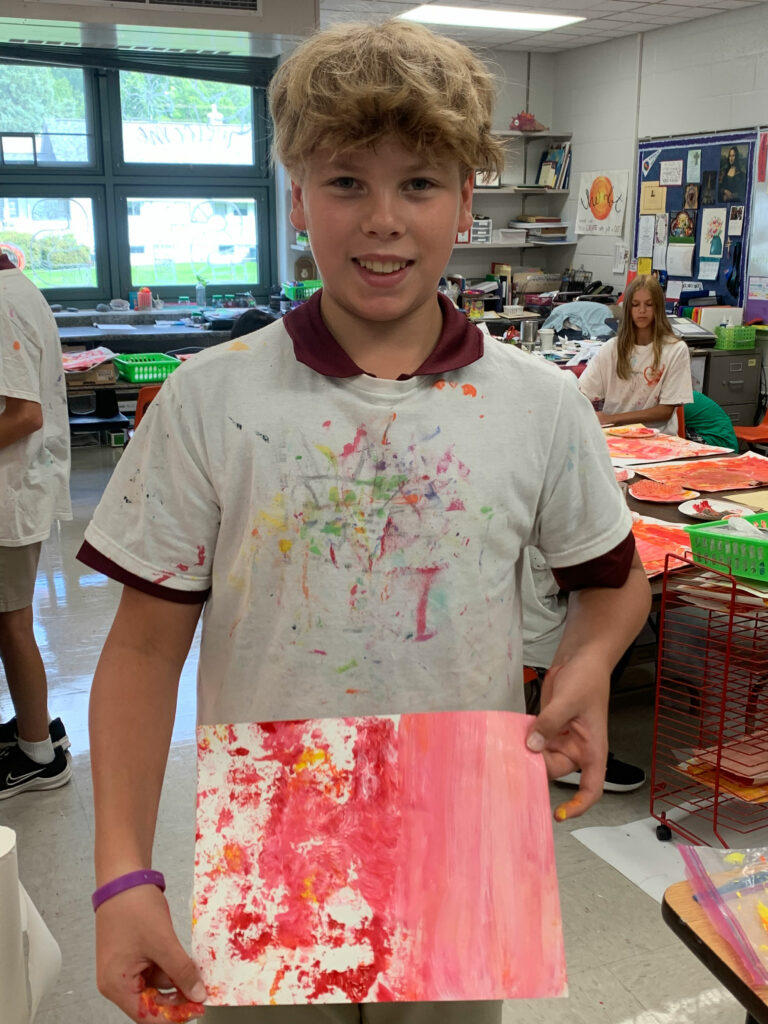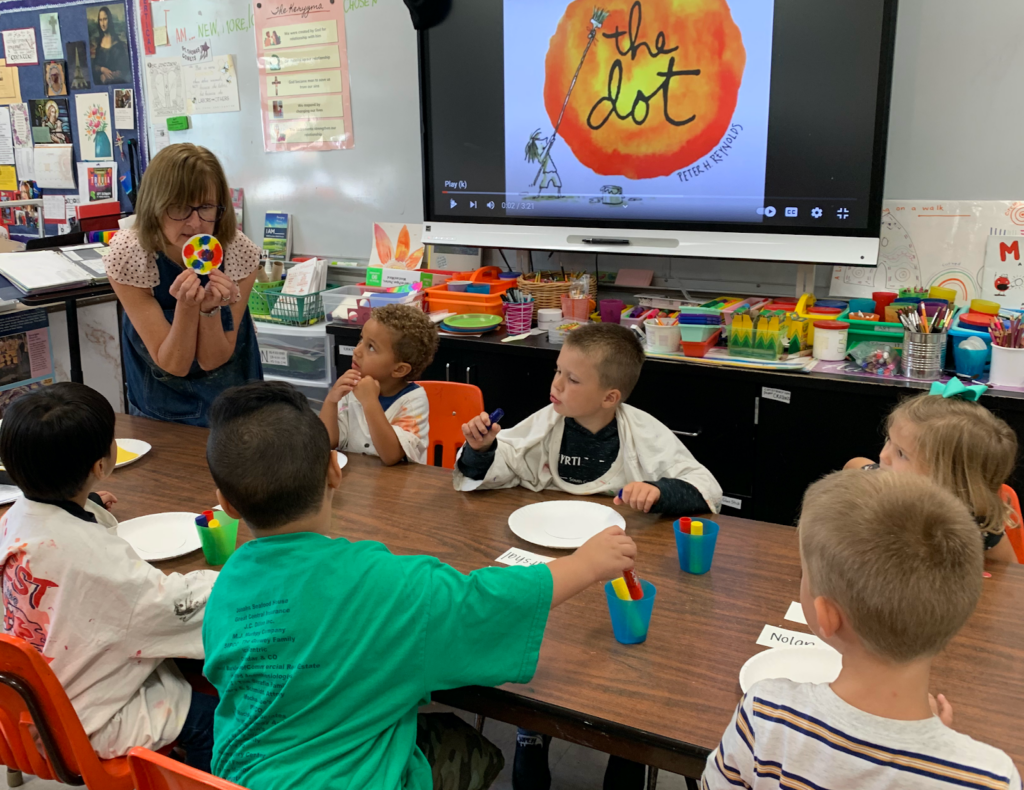Pre-K/Kindergarten
This age level begins developing a perception of the elements of design: shapes, color, lines. The making and using of shapes to create artwork, as well as proper use of scissors and cutting help to develop fine motor skills. Crayons, markers, paint, Kwik Stix, watercolor, tempera paint, pencils and pasting are also explored. The process of learning about the techniques and materials are emphasized and encouraged more than the final product.
First Grade
The process of learning shapes, colors, lines and texture continue. Experimentation with brushes, sponges, and other tools to apply paint occurs. The creation of art work based upon imagination and personal interpretation is introduced. The process is emphasized and encouraged more than the final product.
Second Grade
Students begin to develop an art vocabulary. Drawing and painting are enhanced, as well as the knowledge of good habits in the care of art materials. Students learn about cleaning up and storing materials. Primary and secondary colors are used.
Third Grade
Pride in one’s artwork is stressed as the techniques from previous grades are practiced. Mixing of colors to understand the color wheel is introduced. Students begin to recognize warm and cool colors and to explore movement in art. The basic understanding of the principles of design (unity, variety, balance, rhythm, movement, contrast, center of interest, emphasis, proportion, pattern, and repetition) are studied and practiced.
Fourth Grade
Students begin with the perception of perspective in art. They continue to develop the principles of design and to create more complex artwork. The understanding and relationship between art and religion also is taught.
Fifth & Sixth Grade
Students experiment with greater variety of drawing and painting techniques. Shading is introduced as well as monochromatic and complimentary colors. Perspective is continued and used in horizon, foreground, middle, and background of projects. Religious artwork is more fully developed. As projects are explained there are a few guidelines to follow, as well as a chance to think outside of the box, make a concerted effort and make the final product “your own”.
Seventh & Eighth Grade
At this level, students demonstrate an ability to express ideas, feelings, and moods through the use of drawing and painting techniques. Participation in activities linking visual art to other curricular activities also develop, such as:
- Math: using rulers to measure and using perspective in more detail.
- History: learning about artists from history and imitating what they taught us.
- Social Studies: exploring art and techniques from other cultures.
- Science: using the color wheel in more depth
- Religion: learning Christian symbols and illuminated letters.
Taking pride in finished artwork and the respect of others’ artistic creations are foremost in teaching art appreciation. Projects are introduced to learn new techniques along with an expectation of effort. In addition to cultivating individual talents, students learn to demonstrate good maintenance of class materials, safety habits, and clean-up of an art center and supplies.
